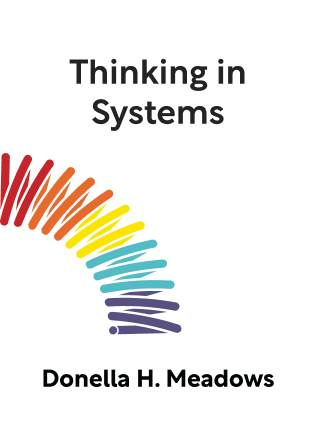

This article is an excerpt from the Shortform summary of "Thinking in Systems" by Donella H. Meadows. Shortform has the world's best summaries of books you should be reading.
Like this article? Sign up for a free trial here .
What is the systems resilience meaning, and how does it work? How can systems become more resilient?
Systems resilience is the idea that a system is able to persist even when it comes under significant stress. Systems resilience is an indicator of a strong system.
Read more about systems resilience below.
Systems Resilience: Meaning and More
A resilient system is able to persist after being stressed by a perturbation.
- The human body avoids disease by foreign agents, repairs itself after injury, and survives in a wide range of temperatures and food conditions.
- An economy can work its way out of a grave unexpected event and out of recessions.
Think of the systems resilience meaning as the range of conditions in which a system can perform normally. The wider the range of conditions, the more resilient the system.
Systems resilience doesn’t mean that the behavior is static or a flat line. Dynamic systems, like the year-long oscillation of a tree growing in spring and shedding leaves in fall, can be resilient as well. Resilience just means that the normal behavior of a system persists through perturbations.
What Creates Resilience?
The stability of resilience comes from feedback loops that can exist at different layers of abstraction:
- There are feedback loops at the baseline level that restore a system, like what we’ve talked about. To increase resilience, there may be multiple feedback loops that serve redundant purposes and can substitute for one another. They may operate through different mechanisms and different time scales.
- Above the baseline loops, there are feedback loops that restore other feedback loops—consider these meta-feedback loops.
- Even further, there are meta-meta feedback loops that create better meta-loops and feedback loops.
To understand this, consider the human again. The body has baseline feedback loops that regulate our breathing and injury repair without our thinking about it. Above this, we also have a brain that can consciously regulate our behavior, discover drugs that influence our bodily feedback loops, and design economies that help us discover drugs. The human body is thus a remarkably resilient system.
Problems from Ignoring Resilience
At times, we design systems for goals other than systems resilience. Commonly, we optimize for productivity or efficiency. This can make the system very brittle—it narrows the range of conditions in which the system can operate normally. Minor perturbations can knock the system out of balance.
Examples include:
- Modern agriculture, which has biologically selected for cows that produce more milk than is natural. To compound the problem, farmers then apply growth hormones to stimulate milk production, which further diverts the body’s resources from health. The cow has become less resilient, is more susceptible to being sick, and thus requires antibiotics to ward off infections.
- Just-in-time manufacturing, which brings parts to the manufacturer just when it is needed. This is efficient because it reduces inventory, but it makes the system more vulnerable to shocks in the supply chain.
- Large organizations can lose their ability to respond to changes in the marketplace because the information and decisions have to struggle through too many layers.
Beware of designing a system that is brittle and cannot heal itself after a perturbation.

———End of Preview———
Like what you just read? Read the rest of the world's best summary of Donella H. Meadows's "Thinking in Systems" at Shortform .
Here's what you'll find in our full Thinking in Systems summary :
- How the world, from bathtub faucets to fish populations, can be seen as simple systems
- The key system traps that hold back progress, such as escalating arms races and policy addiction
- Why seeing the world as systems can give you superpowers in work and life






